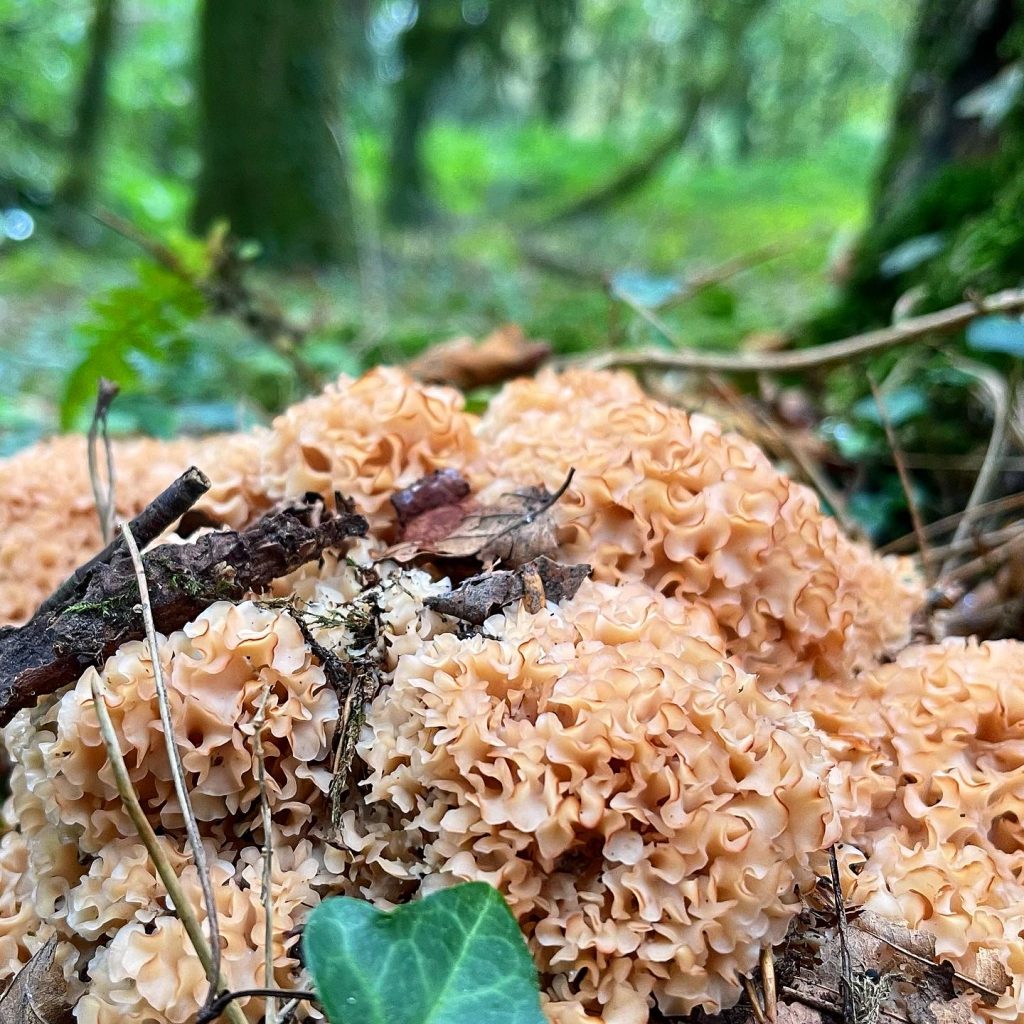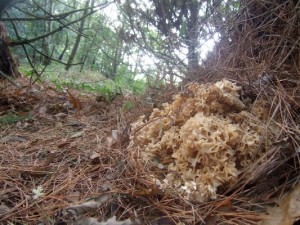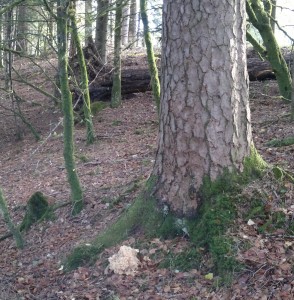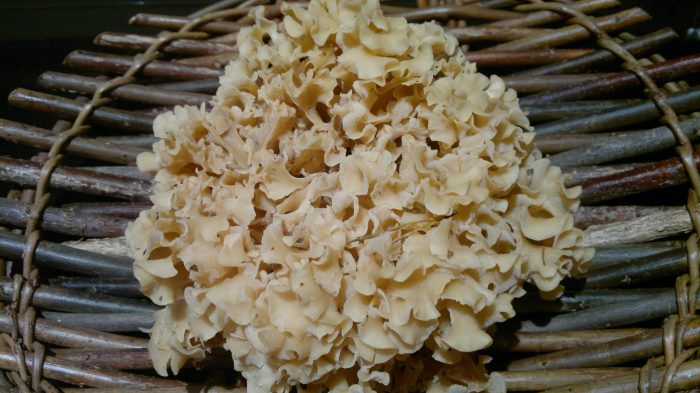Cauliflower Fungus – Identification, Habitat, Distribution, Ecology, Sustainable Harvesting
Sparassis crispa

Cauliflower fungus
- Edibility – 4/5 – Delicious, when young and firm-fleshed, with a mushroom-meets-pine flavour and aroma. Requires thorough cleaning as it embraces pine needles and other woodland debris as it grows. It dries well and is versatile in the kitchen
- Identification – 5/5 – Look for finely lobed dense coral-like growths, creamy to light brown in colour, growing to large sizes – football to beachball size is typical, but they can occasionally get several times larger than that. The outer edges of the fronds tend to be darker. In prime condition the texture is crisp to cartilaginous, though it can become waterlogged and sloppy as it ages, especially if it is subjected to lots of rain.
- Look-alikes – Unmistakable, other than the very similar, much rarer and equally edible sparrassis spathulata, which has broader folds. See also hen of the woods (equally delicious), which does not grow with conifers, and has much broader lobes.
- Distribution – 2/5 – Uncommon – nascent specimens should be allowed to mature
- Season: September-November
- Habitat: At base of Scots Pine mostly, but also occasionally under sitka spruce and other conifers
- Ecological Role: Mildly parasitic on its host tree, though it seems likely that it defends its host from other more virulent parasites, and perhaps, on balance, may even extends the life of the host through this service.
- Considerate Harvesting: Cauliflower fungus can be found with the same trees for many years (I have some that I have been visiting for decades), though its spectacular reproductive structure will not necessarily grow every year. I suspect – if it could express a preference – the fungus might thank you for harvesting some of its spore-bearing structure and carrying it through the forest. As large, obvious, easy to identify mushrooms, there’s a fair chance someone else might beat you to it. Cauliflower fungus can grow so large that its possible to take plenty and leave lots behind for other foragers and woodland beasties – a real sharing mushroom! As the branches divide from a central stem, it is possible to harvest it in portion-size pieces, leaving the rest still live and growing.

cauliflower fungus – sparassis crispa

Cauliflower fungus emerging at the base of a scots pine. Note its dense, youthful growth comes up with considerable pressure, often lifting soil and moss as it goes
This is one of the most exciting fungi to stumble upon, nestling at the base of pine trees like a cloud of coral. Although uncommon, they tend to recur in established locations, though not necessarily in consecutive years. Firm young specimens are delicious, if laborious to clean as the growing fronds swaddle needles, twigs and provide excellent refuge for insects (though it is fairly resistant to maggots). It has a firm texture and fungal, nutty flavour, with pine aromas. They can grow to enormous sizes (1m across), but football – to – beachball size is more normal.

Cauliflower fungus is very versatile, good for all mushroom dishes, though deep fried in tempura batter can be particular special. My friend John Wright came up with the fine idea of making cauliflower-of-the-woods cheese, and you can find the recipe in his excellent mushroom guide (reviewed here).
I infuse cauliflower mushroom trimmings in vodka to capture the incredible pine-meets-mushroom flavour for schnapps and mushroom vermouths, sweetening it with pine syrup. More on using conifers here.
It also pickles well, maintaining its crisp, cartilaginous texture

2 Comments
Hi Mark! We just found one today!! It’s huge! I’m wondering how best to cook it, to make the most of it?
It dries well, so you don’t need to use all of it fresh. What you don’t cook fresh can also be pickled. Or cook and freeze.